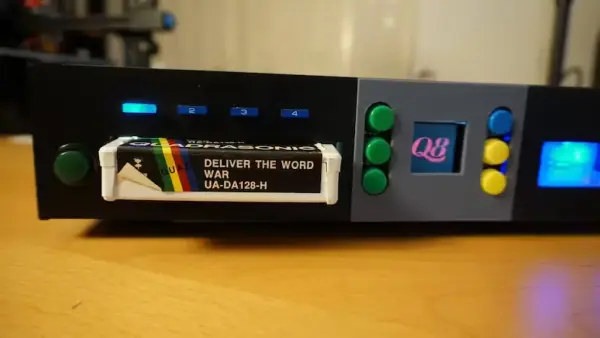Like cassette tapes and floppy disks, 8-track tapes are very susceptible to degradation because data is stored on magnetized media. On top of that, 8-track tapes are old enough that physical damage is very common. For example, the foam pads on almost all original 8-track tapes have long since crumbled into dust. Alon Boris wanted a way to listen to his 8-track tapes without causing further damage, so he built this very unique Raspberry Pi-powered 8-track player.
8-track is a weird format with quirks that are necessary to support its features. An 8-track cassette contains a continuous loop of magnetic tape, so it will play forever. But that means that users can’t rewind the tapes—only play and fast-forward. And the most unique feature is right there in the name: the tape has eight parallel audio tracks. Split into two stereo channels each, that results in four “programs” (songs, book chapters, etc.) that play simultaneously. The user simply selects the program that they want to pipe through the amplifier at any given time.
One strange effect of this setup is that switching programs doesn’t start the track over. If you’re at 01:26 of “Come Together” (Program 1 of the Abbey Road 8-track) and switch to Program 3, you’re going to drop right into 01:26 of “I Want You (She’s So Heavy)”. If you want to hear that song from the beginning, you’ll have to fast-forward the tape until it starts back over.
Boris wanted to digitize his 8-track tapes, but also to replicate that experience. He started by recording the full length of every track. He then wrote a Python script that plays back those tracks at the touch of buttons connected to a Raspberry Pi 3 Model B+. It plays the audio through a Robertsonics Tsunami 8-channel audio card—one channel for each track. All four programs play simultaneously, but only the selected program is audible. Analog VU meters indicate the volume of each program and a small LCD screen shows the status.
That’s all digital, because the audio is coming from WAV files. But Boris still wanted to the feeling of inserting an 8-track tape. So he added printed QR codes to each of his tapes. A Useful Sensors Tiny Code Reader scans the QR code of the tape and tells the Raspberry Pi the ID so it can start playing the corresponding set of WAV files.
Now Boris can listen to his 8-track tapes as much as he wants without fear of causing damage. He gets the full 8-track experience purely from digital files.


